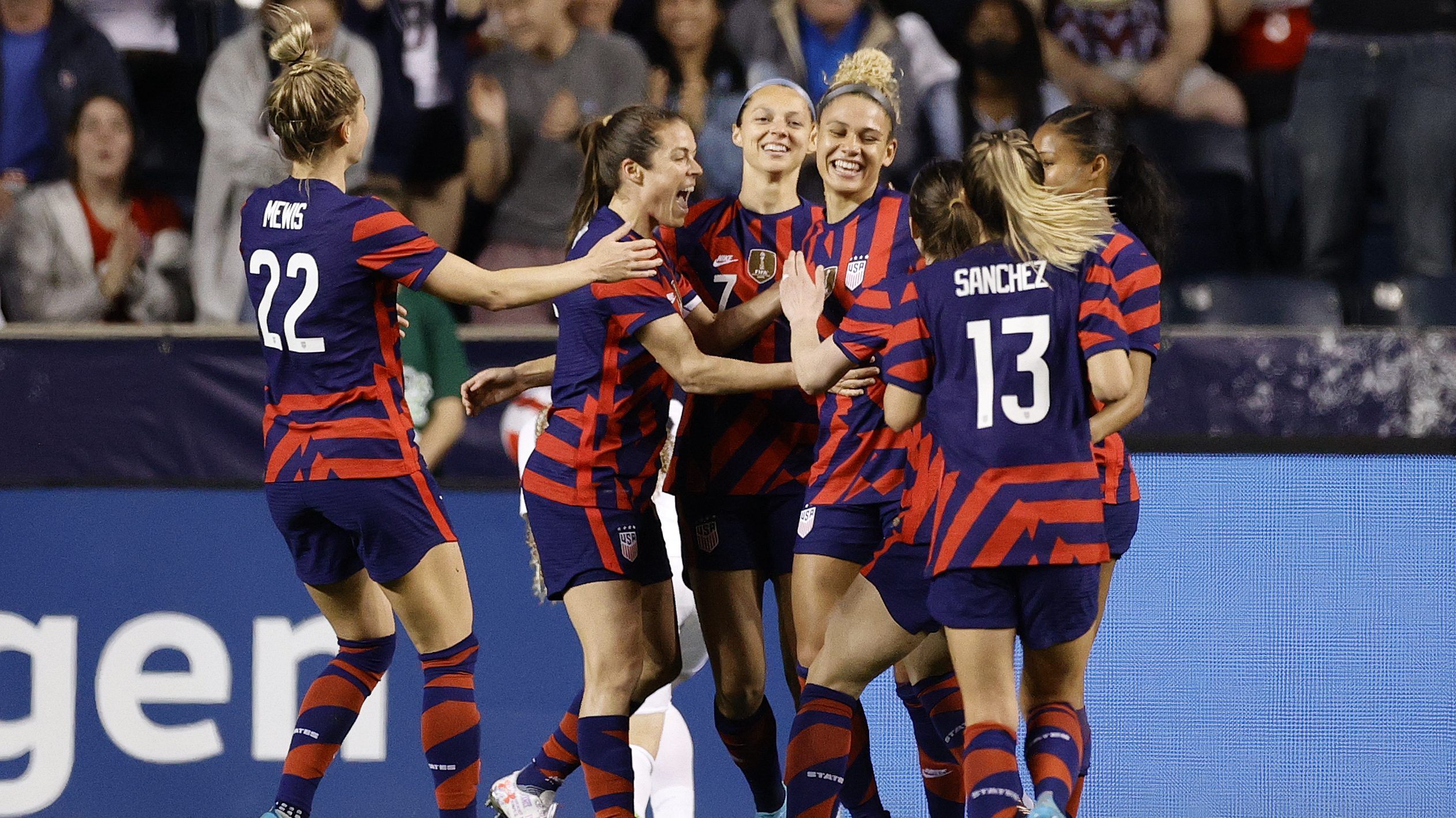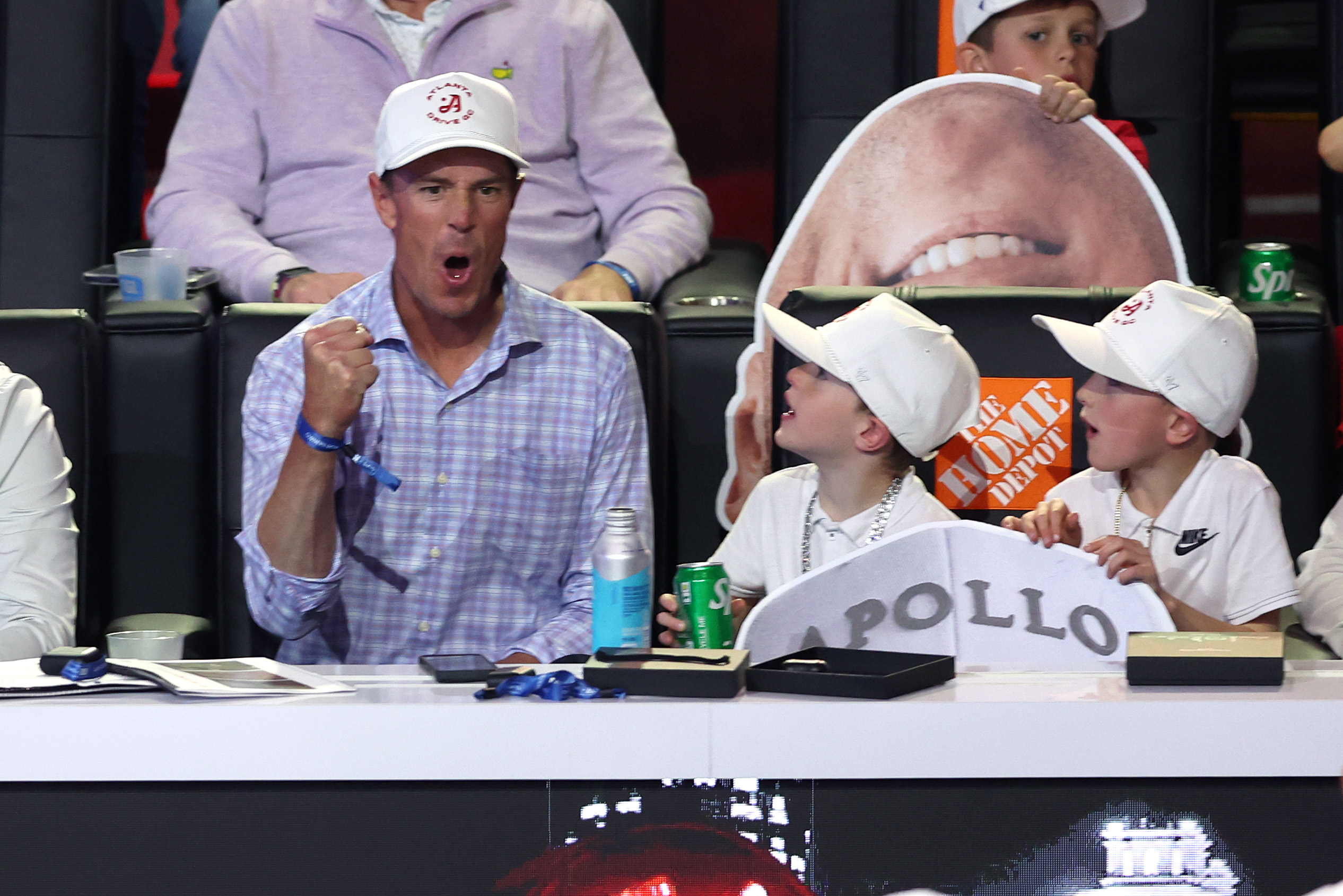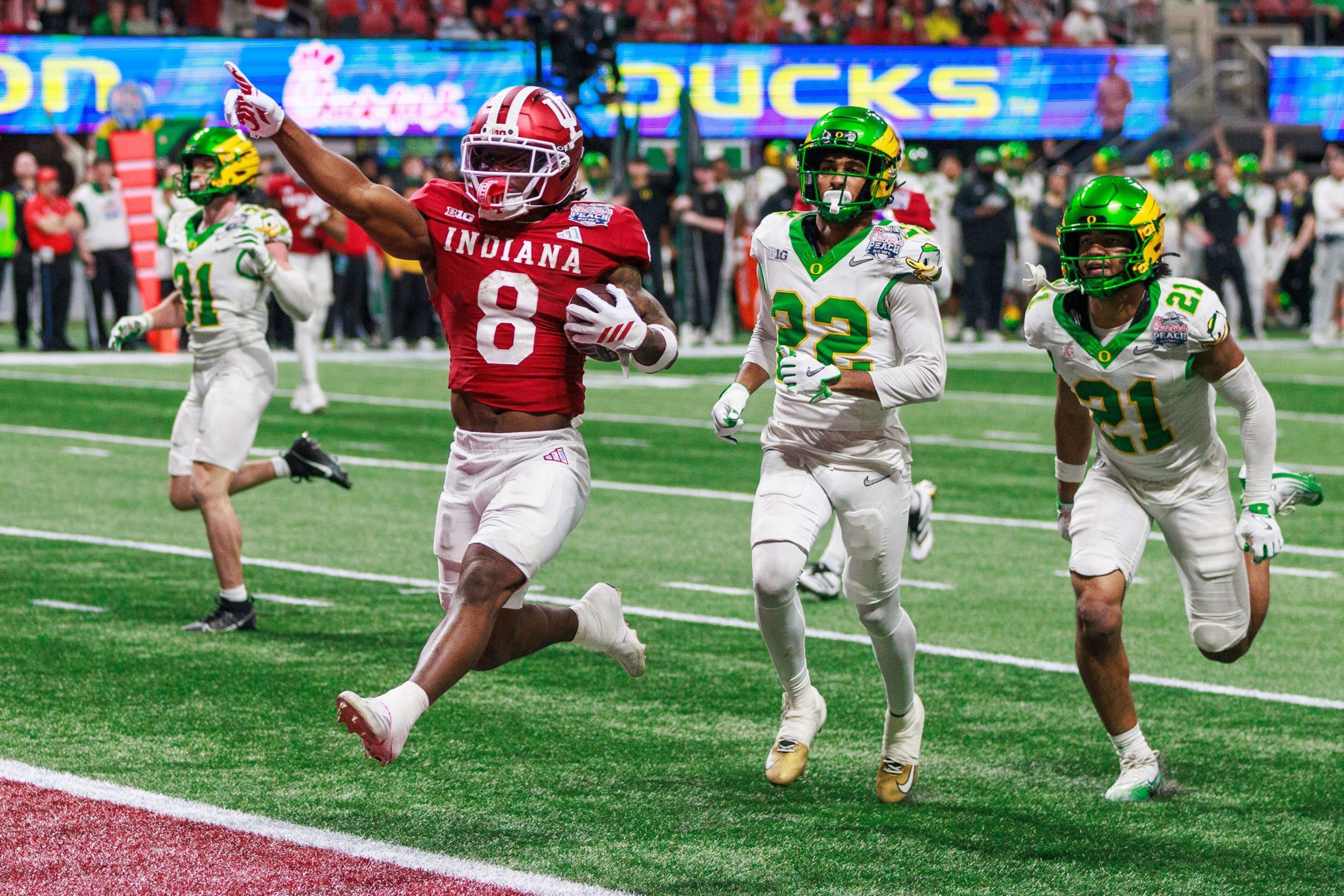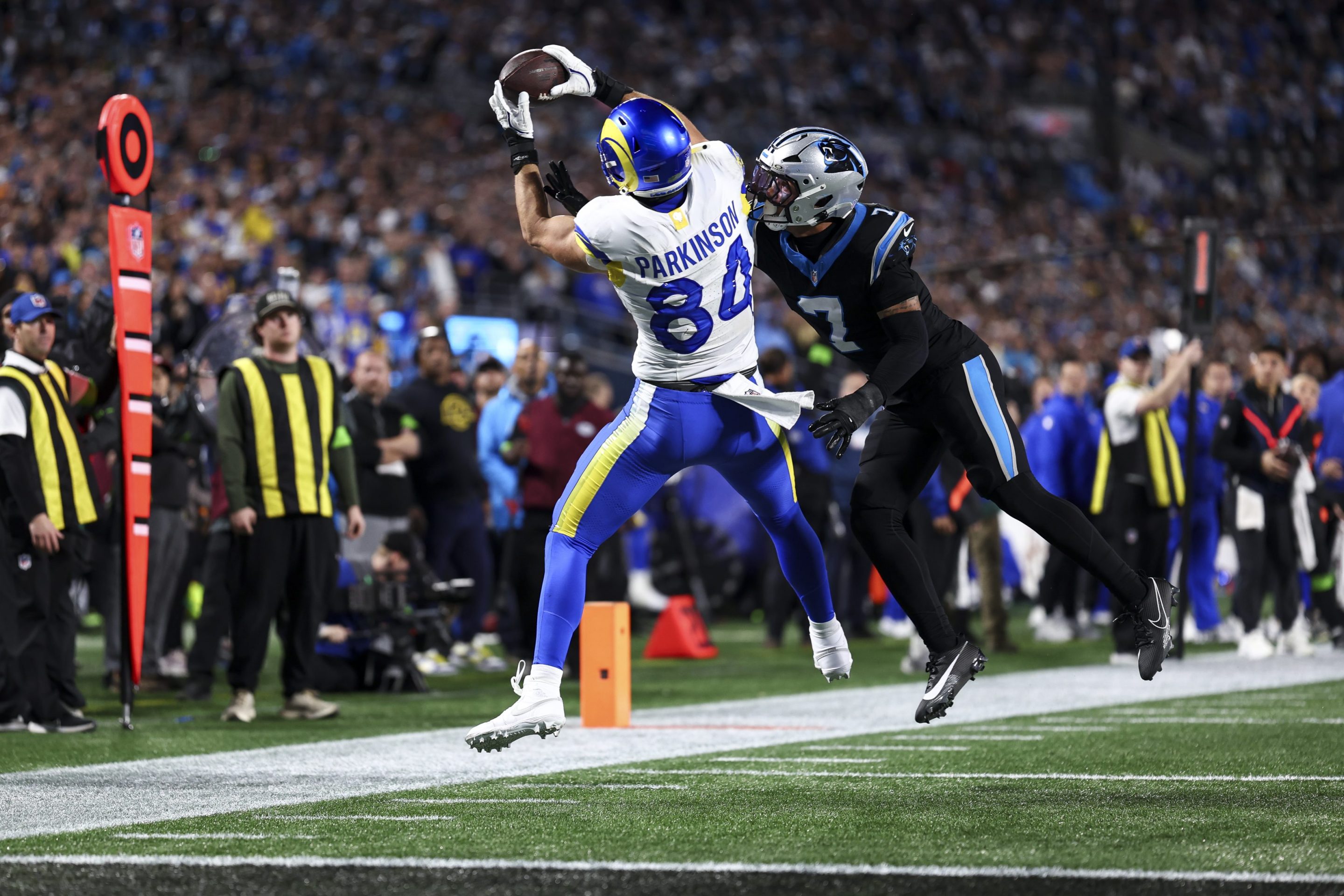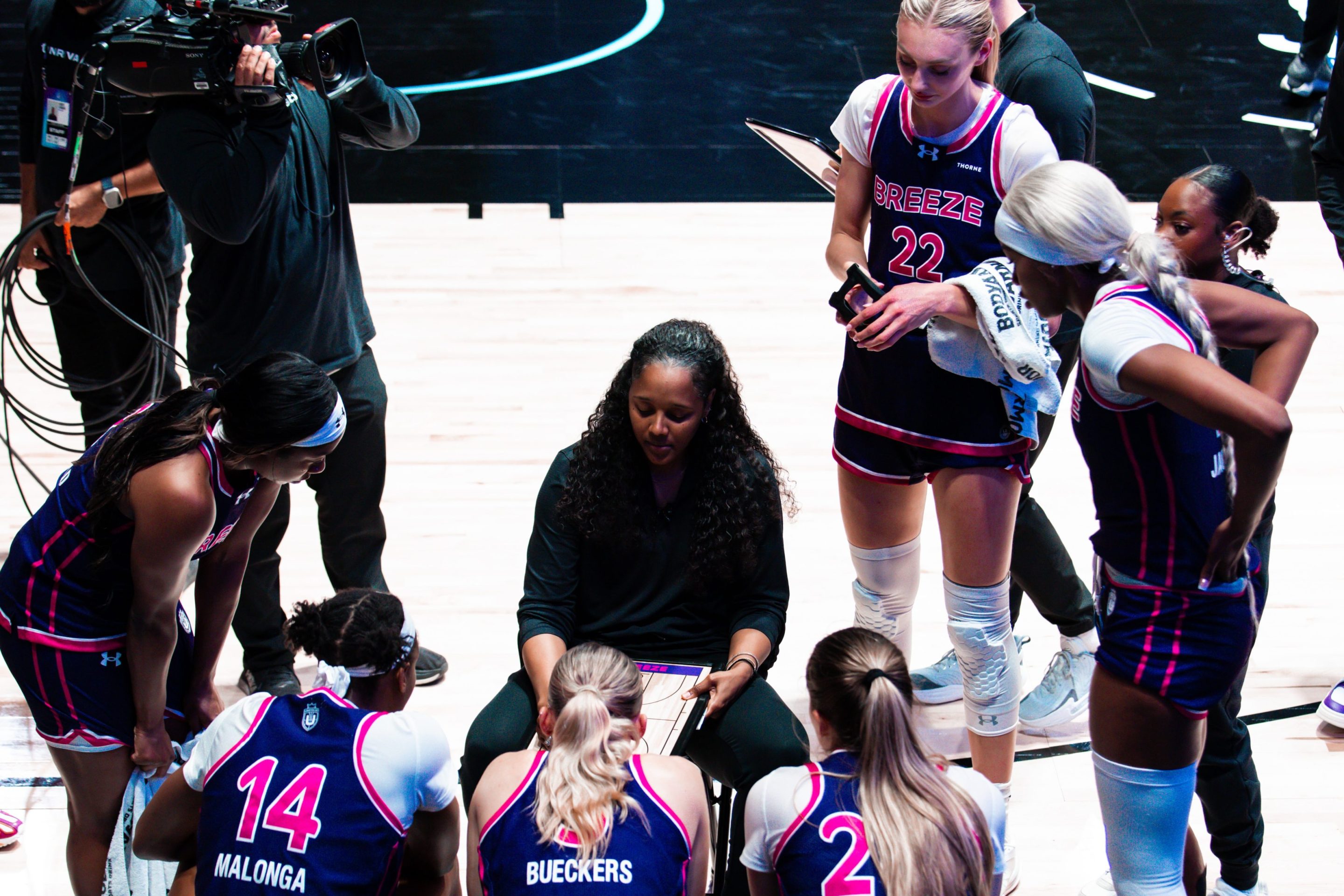After decades of fighting for recognition and resources—and more than a few hours spent in court—equal pay has finally arrived for the U.S. women’s national team. On Wednesday, the U.S. Soccer Federation announced in congruence with the U.S. Women’s National Team Players Association and the U.S. National Soccer Team Players Association that they have reached a landmark collective bargaining agreement, placing both teams under the same compensation umbrella for the first time in history.
The CBA will run through 2028, and basically does what it says: The women and the men have agreed to the exact same terms. Both teams will be paid the same when in camps, on the road, and in games, and they will be compensated at the same rate when participating in equivalent competition.
For many who have dedicated their lives to this sport, the announcement is a huge emotional win. It’s exactly what the USWNT asked for, with renewed support from their counterparts and a healthier relationship to their federation than in many other countries. But to parse out the true significance of the agreement, you have to look both internally at the history of the sport in the United States, then externally toward how it impacts the global game.
For example, casuals might have never known that USWNT players were actually salaried employees of the federation for years had it not become an important part of the team’s gender discrimination lawsuit filed in March of 2019. The federation underwrote the NWSL in its early years, paying the salaries of its biggest stars to allow the league to find its feet financially. That commitment to making sure players had stable income quickly became both the federation’s legal defense—and its potential public downfall.
Legally, U.S. Soccer likely had a point when they said the compensation given to the women in the 2017 CBA wasn’t comparable to what they offered the men, if you ignore the societal forces at play. The USWNTPA opted, for perhaps one contract too long, into a system that prioritized security for its core player pool over the high-risk, high-reward of a per-service bonus structure. The two parties disagreed on whether a bonus-based CBA had ever been on the table at that time, but the contract as negotiated reflected the instability of the club ecosystem as the NWSL took a very cautious approach to growth. If you aren’t making a living wage with your club, guarantees at the national team level become a lifeline.
There is reason to believe that U.S. Soccer actually might have won the lawsuit against their most-lauded team, but they had already done irreparable damage to themselves in the court of public opinion. Public filings submitted in early 2020 uncovered something truly ugly at the heart of the organization, arguing that women "do not perform equal work requiring equal skill [and] effort" to the men because "the overall soccer-playing ability required to compete at the senior men's national team level is materially influenced by the level of certain physical attributes such as speed and strength." Suddenly, no one was hiding behind revenues or contracts; those in charge of U.S. Soccer’s legal defense said that a discrimination lawsuit had no merit because men and women are not equal, and do not do equal work.
At the time, speculation abounded that U.S. Soccer would let their relationship with the USWNT completely fall apart, spend millions in legal fees, and alienate sponsors and fans alike all in the attempt to be proven right in court. But the federation allowed itself to be steered in another direction. President Carlos Cordeiro resigned, and former USWNT player Cindy Parlow Cone took his place. Immediately, the temperature between the women’s team and the federation cooled, despite significant losses in revenue due to the pandemic and the team’s rocky performance at the Tokyo Olympics.
In 2022, U.S. Soccer made a bet on its players, and the USWNT made a bet on themselves. They settled the lawsuit, contingent on a CBA being ratified, and the paradigm had now shifted. Club opportunities, both in the U.S. and abroad, are growing at a rapid pace, and the stars of the game no longer have to fall back on national team contracts in the fear of league collapse. This also puts a healthy amount of parity back into the player pool, with call-up guarantees a thing of the past. USWNT players will have to earn their spots both with their clubs and in national team camp, and they’ll be rewarded for their current performance alone.
The players are also hoping the agreement will have a ripple effect outside of the United States. The U.S. is not actually the first country to pay their men and women equally, though they were unique in their prior salary structure. The Netherlands announced in 2019 that they would gradually increase their women’s team’s compensation until equal to the men after 2023. Other teams like Australia, New Zealand, and Norway have done the same.
But the external effect of what the USWNT and the USMNT achieved on Wednesday goes bigger than the federation itself, which is also why collaboration between the two unions became essential. Parlow Cone made clear on multiple occasions that the federation was ready for an economically identical model, with equal rates of pay to both senior team squads. In a way, the precedent elsewhere and the bad press that stemmed from the lawsuit made that element of negotiations something of a moot point.
However, U.S. Soccer would not budge on one major issue: FIFA prize money. No one is putting FIFA on a pedestal for any part of their stewardship of the sport, but their treatment of the women’s game has mostly been an afterthought. Women didn’t even have a World Cup until 1991, and the organization frequently uses top women’s tournaments as a testing ground for their more controversial ideas. They tested rules at the 2019 Women’s World Cup that were later scrapped, and while they’ve given up on the unpopular idea of holding a World Cup every two years in the men’s event, the possibility still lingers as a threat for the women.
Their attitude is reflected in the FIFA bonuses given out at each World Cup. In 2019, the entirety of the World Cup bonus money allotted to that year’s Women’s World Cup totaled $30 million, $4 million of which went to the USWNT for winning it all. In 2018, $400 million in prize money was given out at the men’s World Cup, $38 million of which went to France as champions. As each cycle passes, the gap between the two tournaments has actually grown; even as the Women’s World Cup money doubled between 2015 and 2019, the dollar-for-dollar growth on the men’s side still outpaced them.
It should be noted that FIFA, like U.S. Soccer, is a non-profit organization ostensibly dedicated to the growth of the sport of football for everyone. Revenue arguments, as tantalizing as they may be, aren’t relevant to these organizations per their own internal logic. If you have a mission statement that your job is to grow the game in all corners of the world, subsidization comes with the territory until we live in a society of equal opportunity. If your organization isn’t committed to making equal opportunity a reality, then subsidization will be around for a while.
But with FIFA’s financial reluctance towards the women’s game being what it is, U.S. Soccer made it very clear that they could not shoulder the burden of replicating the eight-figure gap, and that the solution had to come from the players themselves. That part of Wednesday’s agreement is truly historic, and progressive in a way that clearly still makes some people uncomfortable.
The men and the women will pool their prize money, meaning that whatever is earned in Qatar in 2022 and Australia in 2023 will become one (hopefully large) sum of money shared equally. Perhaps even more significantly, the same approach applies to the 2026 and 2027 tournaments, the first of which will be hosted in North America, with the hope that the USMNT might make their deepest World Cup run yet.
To see how this is good for everybody takes a little faith and vision, and the USMNT do deserve credit for having both. Rather than focusing on the men giving something up, one has to see this as the financial burden of sexism now equally affecting both teams. With solidarity achieved in writing, further pressure will hopefully be placed squarely on FIFA to address the gap they’ve created, and encourage other federations to take the same step. If everyone gets on board, and the USWNT keeps winning, the men don’t stand to lose much at all.
The solidarity goes both ways, as the USWNT pushed to add paternal leave and other parental privileges into the men’s contract, with the understanding that men deserve non-gendered treatment too. It’s also an important step toward a relationship between the men and women’s teams that has historically been slightly strained, as the men’s failures became cannon fodder for arguments against the federation’s treatment of women.
In short, the CBA financially incentivizes both teams to be as good as they can possibly be, and gives U.S. Soccer reasons to contribute to their successes equally. There’s still work to be done, but sometimes the beauty of an act like Wednesday’s comes from an inherent simplicity after decades of complications. As the slogan says, equal pay for equal play: Decades of work reflected in a single sentence, and now, a reality.
